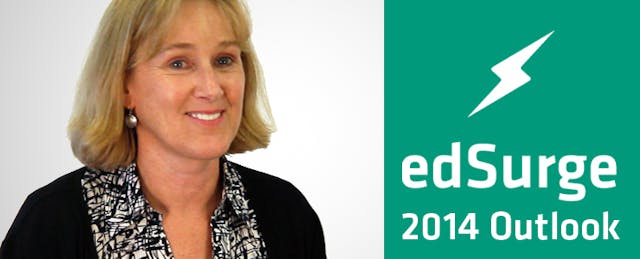There’s a scarring lack of equity in American education. My challenge to us all for the coming year: to move decisively to close America’s digital learning gap so that the opportunity to learn in school and throughout life is open to everyone, not just a few.
We have pockets of excellence in American education, ones that surpass the best of the best around the world. All across the country, students are designing, coding, composing, animating and publishing. They are experimenting and solving problems of water and energy, creating guides to local treasures and developing global competence through virtual exchanges that connect students across cultural and national borders.
And all across the country, innovative education leaders and classroom teachers are engaging, motivating and nurturing students to develop mindsets for lifelong learning.
But – and it’s a huge “but” – huge gaps exist between the learning outcomes, graduation rates and college readiness of students based on race, class and where they live. Gaps also exist between high-performing and under-performing schools based on differences in the willingness of school leaders to innovate, access to funding and resources, and community commitment.
Since 2001, we—as a nation--have tried to close these gaps by stressing accountability based on annual testing. What we learned: leaning so heavily on standardized tests to the near-exclusion of all other measures do not improve performance. Instead they give rise to a singularly uninspired approach: “teaching to the test.”
All of this could change.
Just as the printing press and free public libraries caused literacy rates among European adults to soar by making books readily available to all – not just the wealthy – technology represents a huge new opportunity for all Americans to learn.
Technology, and especially the Internet and mobile devices such as tablets and smartphones, has become ubiquitous in our daily lives and affordable, even to our public schools. With the Internet, students can access primary source documents, research just about anything and listen to explanations over and over. Huge numbers of education-focused websites help people learn – people of all ages and stages of life, from students to professionals to leisure-time learners.
With mobile devices and wireless access, teachers and students can do what they naturally want to do – move around the classroom or the campus, work one-on-one with each other or team up in small groups. Few students want to learn in isolation, tethered to headphones plugged into computers in a lab down the hall.
Here are the signs that I’ll be watching for in 2014 to track what kind of progress we are making on this vitally important goal:
1. Access
Not all teachers and students have 24 x 7 access to high-speed Internet and a mobile device for learning. They need it.
Over the past 15 years, the FCC through its E-Rate program has connected just about every U.S. school and library to the Internet. Many of these connections, however, are now the digital equivalent of country lanes. The FCC is working to modernize the E-Rate program to make it more affordable for schools and libraries to upgrade their Internet connection speeds. LINK All Americans should support this effort.
2. Increasing digital participation
About 60 million Americans choose not to go online. That will hurt them; already, access to jobs, federal benefits, health care through public health insurance exchanges and increasingly, educational opportunities all require high-speed Internet access.
Our public schools have a duty to educate students and their families about the importance of digital technology to their futures. They also must ensure that all students are digitally literate – that they understand online information, media and how to be competent digital citizens before they reach adulthood.
3. Empowering users
Learning to wield technology goes much deeper than, say, just learning keyboarding skills. Our teachers and students need to learn how to apply technology in new and meaningful ways—to use the technology to literally learn how to learn.
In the old model of education, the job of schools was to teach students everything they needed to know for life and work. That’s impossible in a rapidly changing world. Instead, students must acquire the knowledge, competencies and skills that prepare them to continually learn new skills for a future we cannot predict.
So my big idea for education in 2014 is to close the digital learning gap, so all Americans have the opportunity to learn now and throughout their lifetimes.
Join me in my cause.


